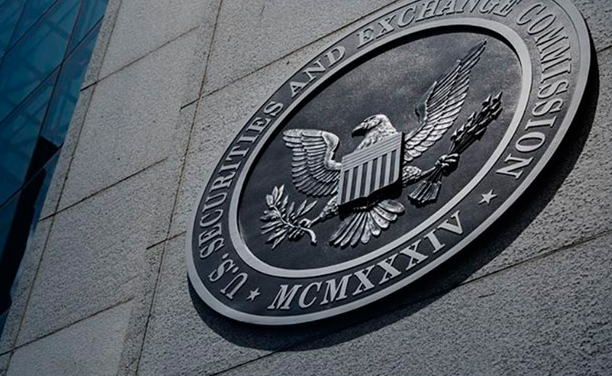The latest data on the U.S. labor market, published last Friday, marked a turning point for assessing how the year has begun. It also serves as an opportunity to adjust some of the 2025 forecasts released by international asset managers.
The main takeaway from experts is that this latest data rules out an interest rate cut in January—the Fed meeting will take place on January 28–29. Meanwhile, markets have even begun shifting expectations for new cuts to the second half of the year. “Despite strong demand, wages did not respond to the increased labor market activity, as they rose by 0.3% compared to the previous month, the same as in November, and the year-on-year measure even fell to 3.9% from 4.0%. This aligns with central bankers’ assessment that, for now, there are no additional inflationary pressures coming from labor markets, and it is unlikely they will intensify their recent hawkish tone,” explains Christian Scherrmann, Chief U.S. Economist at DWS.
“With no clear signs of weakening, we suspect that the Fed will be happy to pause its easing cycle at its upcoming January meeting, as broadly indicated in December. We remain of the view that the Fed will make only one cut this year, and while we still foresee it happening in March, we acknowledge that the Fed will be data-dependent. However, we expect the Fed to resume rate cuts in 2026 as a result of the net negative impact on growth that we believe will stem from the new administration’s unorthodox economic programs,” argues David Page, Head of Macro Research at AXA IM.
It is clear that a more aggressive Fed impacts the outlook of international asset managers, but it is not the only thing that has changed as the year has begun. According to Fidelity International, there has been a widespread improvement in earnings revisions across most regions. However, in their view, two aspects remain unchanged compared to this year: “We expect U.S. exceptionalism to continue for now, driven by upcoming tax cuts and deregulation policies, which is why we maintain our preference for U.S. equities. At the same time, we still see a high political risk. Trade war risks have increased, while the likelihood of a peace agreement between Russia and Ukraine has grown,” they state.
For Jared Franz, an economist at Capital Group, the U.S. economy is experiencing the same phenomenon depicted in the movie The Curious Case of Benjamin Button (2008). “The U.S. economy is evolving similarly. Instead of advancing through the typical four-stage economic cycle that has characterized the post-World War II era, the economy seems to be moving from the final stage of the cycle to the mid-cycle, thereby avoiding a recession. Looking ahead, I believe the United States is heading toward a multi-year period of expansion and could avoid a recession until 2028,” he says.
Historically, and according to Capital Group’s analysis of economic cycles and returns since 1973, the mid-cycle phase has provided a favorable context for U.S. equities, with an average annual return of 14%.
Implications for Investors
According to Jack Janasiewicz, Chief Strategist and Portfolio Manager at Natixis Investment Managers Solutions, his outlook for the year can be summarized as U.S. stocks rising and bonds falling in 2025. “As we enter the new year, the labor market seems to be in recovery mode, as inflation continues to decline, contributing to higher real wages. This translates into greater purchasing power for U.S. consumers. Since consumption drives most of the growth in the U.S., this is a very healthy scenario. Looking ahead to 2025, our outlook remains positive, with expectations of even slower inflation and an expanding labor market. Investment strategies are likely to favor U.S. equities with a balanced investment approach and the use of Treasury bonds to mitigate risk. We foresee that new investments in artificial intelligence will continue to drive productivity and economic growth. The stock market is expected to maintain its upward trend, while the bond market will earn its coupon,” highlights Janasiewicz.
Fixed Income: Focus on Treasuries
One of the most notable movements in these early weeks of January is that the yield on U.S. Treasuries is approaching 5%. According to Danny Zaid, manager at TwentyFour Asset Management (a Vontobel boutique), last Friday’s U.S. unemployment data provides a strong argument for the Fed to remain patient regarding the possibility of further rate cuts. “This has caused a significant increase in U.S. Treasury yields in recent weeks, as the market is lowering expectations for additional cuts. Moreover, rates have also been pushed higher due to market uncertainty about the extent of the new Trump administration’s policy implementation, particularly concerning tariffs and immigration, which could have an inflationary impact,” notes Zaid.
Analysts at Portocolom add that another notable development was that, for the first time in over a year, the 30-year bond exceeded a 5% yield. “European debt experienced virtually identical behavior, with both the Bund and the 10-year bond gaining 15 basis points, closing at 2.57% and 3.26%, respectively,” they point out.
Among the outlooks from the manager at TwentyFour AM, he considers it likely that 10-year U.S. Treasuries will reach 5%. “However, if we take a medium-term view, yield levels are likely to become attractive at these levels. But we believe that for there to be a significant rally in U.S. Treasuries, at least in the short term, we would need to see data pointing to economic weakness or further deterioration in the labor market, and currently, neither condition is present. The rate movements, while significant, are largely justified given the current economic context,” he argues.
The increase in sovereign bond yields has also been observed in the United Kingdom. Specifically, last week saw the largest rise in bond yields, with 10-year Gilts reaching an intraday high of 4.9%, a level not seen since 2008. “Although specific U.K. factors, such as the budget, contributed to the rise, most of the increase was due to the rise in U.S. Treasury yields during the same period. Both weaker growth and higher interest rates put pressure on public finances. Unlike most other major developed countries, the U.K. borrows money at a much higher interest rate than its underlying economic growth rate, worsening its debt dynamics. If current trends of rising yields and slowing growth persist, the likelihood of spending cuts or tax hikes will increase for the government to meet its new fiscal rules,” explains Peder Beck-Friis, an economist at PIMCO.
Equities
As for equities, the year began with the stock market facing a correction that, according to experts, is far from alarming and seems like a logical adjustment after a strong 2024 in terms of earnings. “This data has dispelled fears of an imminent recession but has also ruled out the possibility of rate cuts by the Federal Reserve in the short term, a factor that has pressured major indices like the S&P 500 and Nasdaq, which have fallen around 1.5%. This correction seems to reflect a normal adjustment in valuations rather than a deterioration in economic fundamentals. Credit spreads become a key indicator for interpreting this environment, as long as they remain stable, the market is simply adjusting after a period of rapid gains. Only if we see a widening of these spreads could it signal the first sign of growing concerns about economic growth,” says Javier Molina, Senior Market Analyst at eToro.
In this context, Molina acknowledges that the upcoming earnings season, starting this week, is generating high expectations. “An 8% year-over-year growth in S&P 500 earnings is anticipated, one of the highest levels since 2021. Sectors such as technology and communication services are leading the forecasts, with expected growth of 18% and 19%, respectively. In contrast, the energy sector faces a sharp contraction in earnings, reflecting the challenges of this environment,” he says.
According to the investment team at Portocolom, their assessment of the first weeks is very clear: “The first week of the year in equity markets was characterized by the opposite movement between Europe and the U.S. While U.S. indices fell 2% (the S&P 500 closed at 5,827.04 points and the Nasdaq 100 at 20,847.58 points), in Europe we saw gains exceeding 2% for the Euro Stoxx 50 and 0.60% for the Ibex 35, which ended the week at 4,977.26 and 11,720.90 points, respectively. The performance of a key benchmark, the VIX, was also noteworthy, as the volatility index rose by more than 8% during the week, adding tension to the markets, particularly in the U.S.”
For the Chief Strategist and Portfolio Manager at Natixis Investment Managers Solutions, earnings growth and multiple expansion were the biggest drivers of U.S. equity market returns during 2024. Looking ahead to 2025, Janasiewicz points out: “While some may argue that valuations are at exaggerated levels, we believe these valuations may be justified by the fact that U.S. corporate margins are at historic highs, and investors are willing to pay more for higher-quality companies with stronger margins. Moreover, risk appetite does not appear to be very high, as many investors seem content to remain in money market funds earning 5%, hesitant to jump into equities, which would push prices even higher.”




